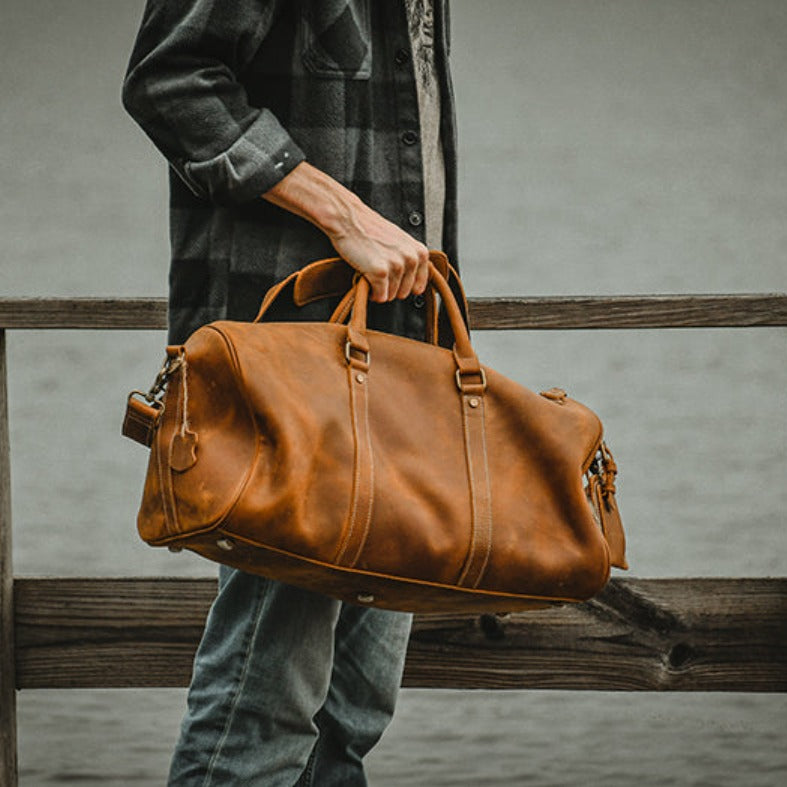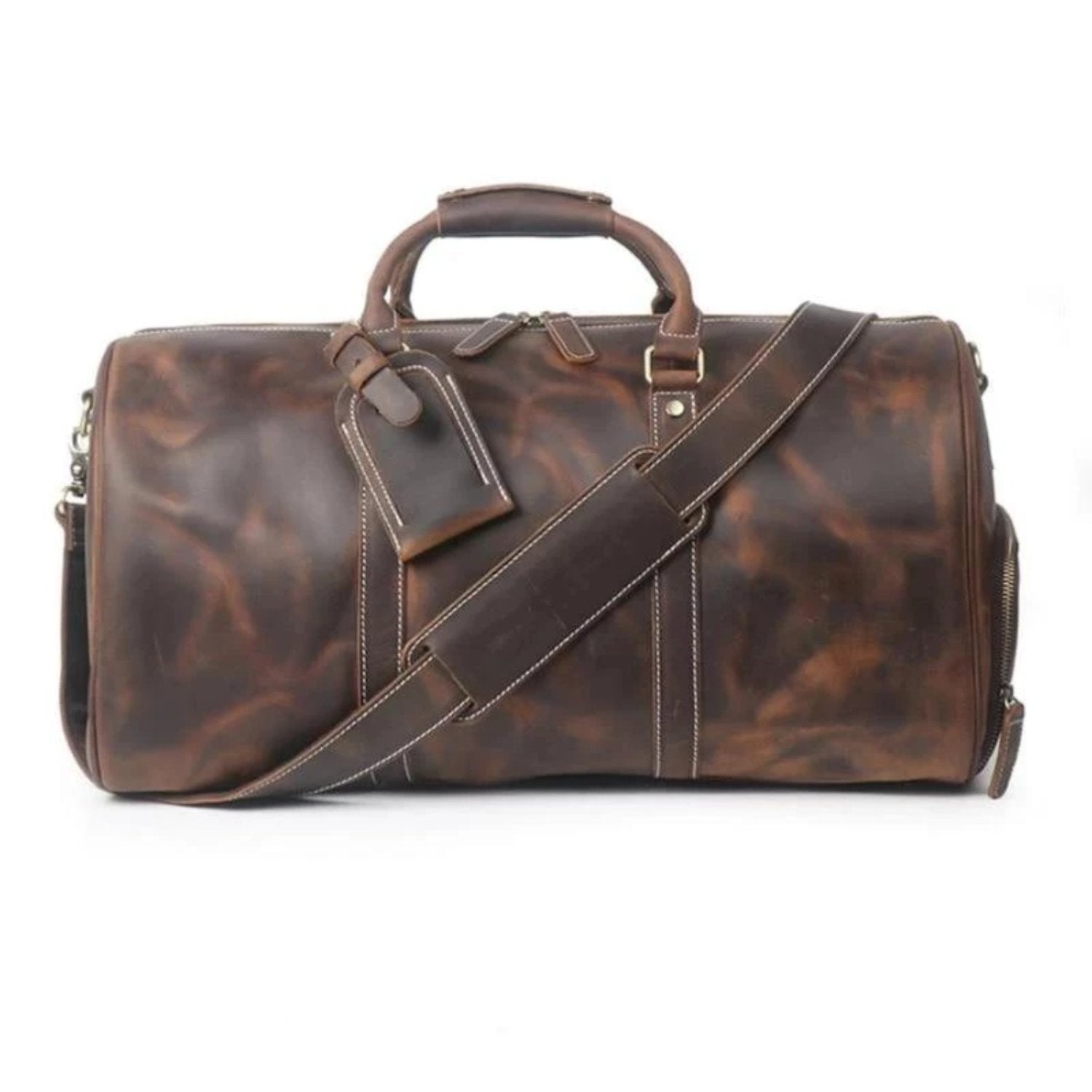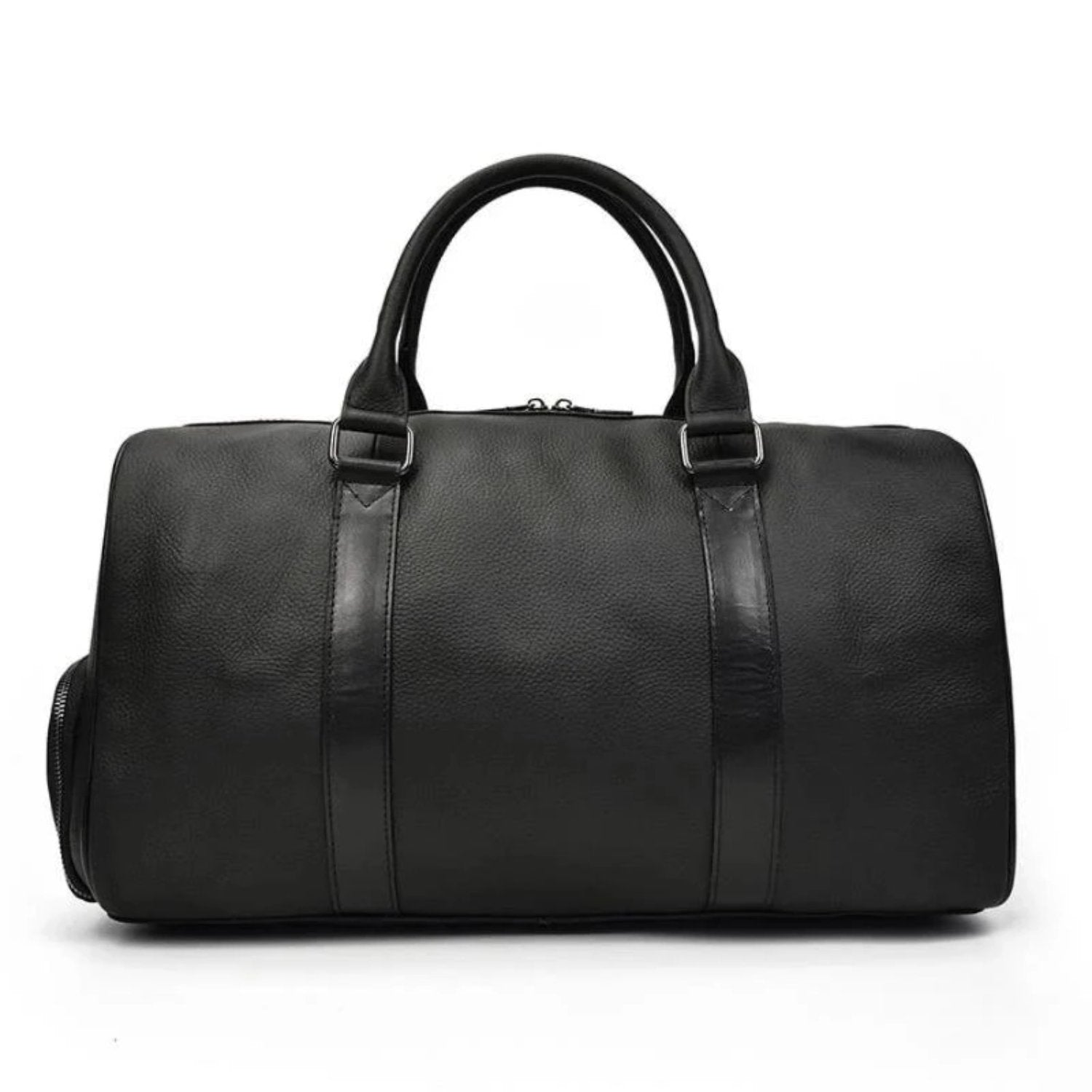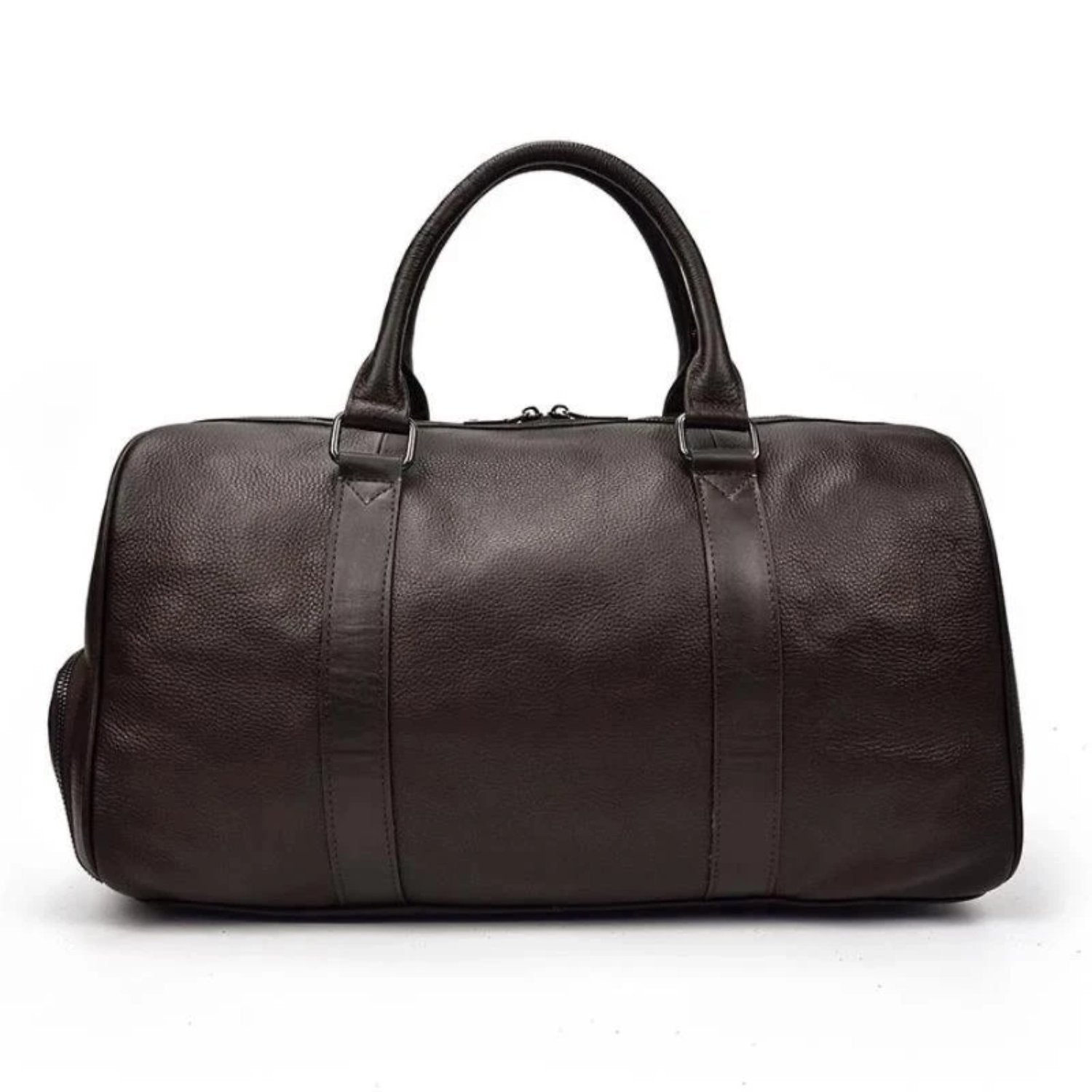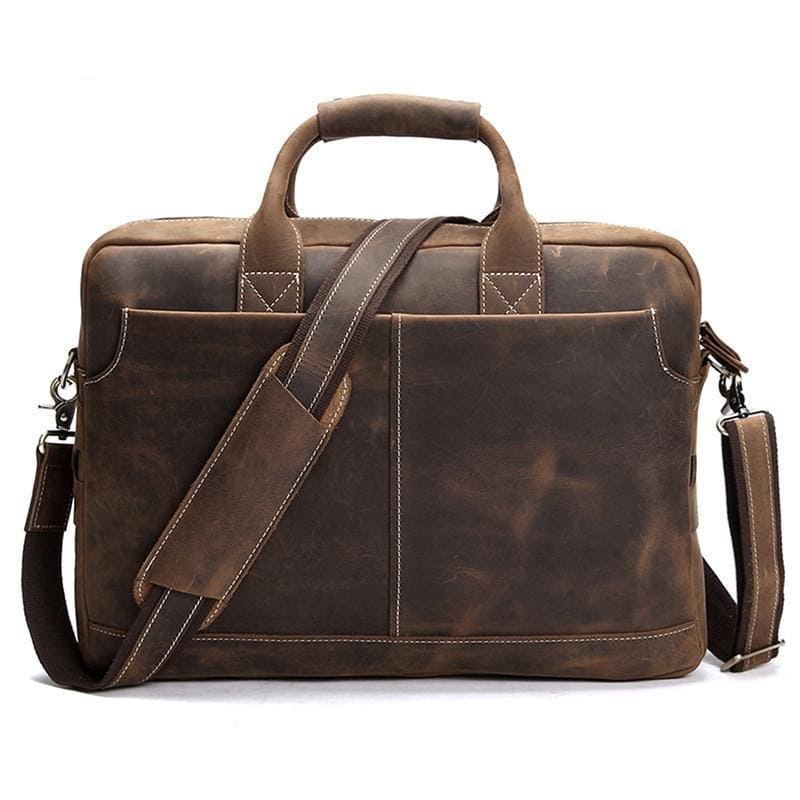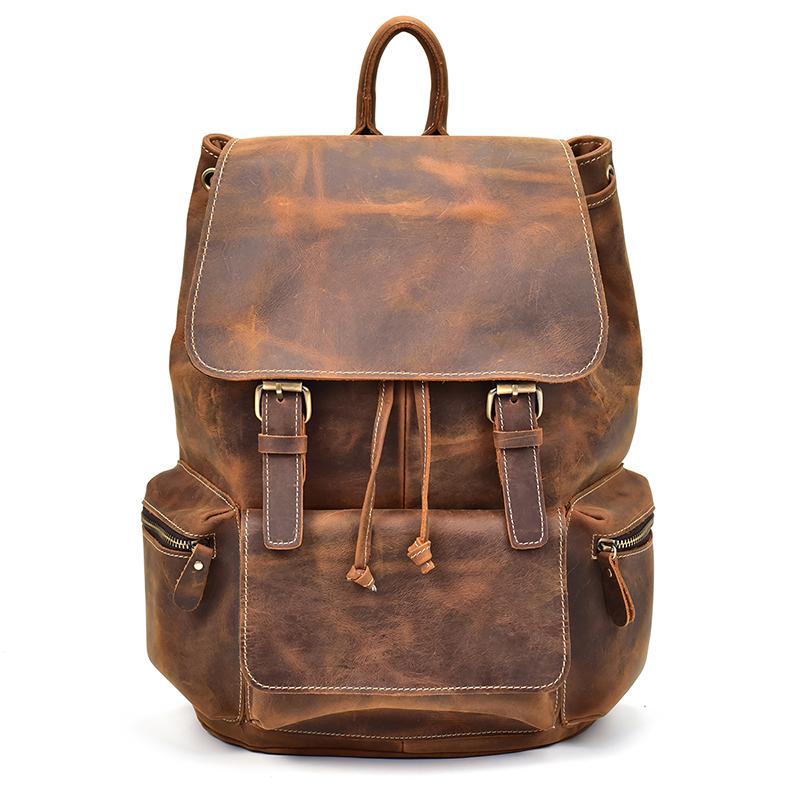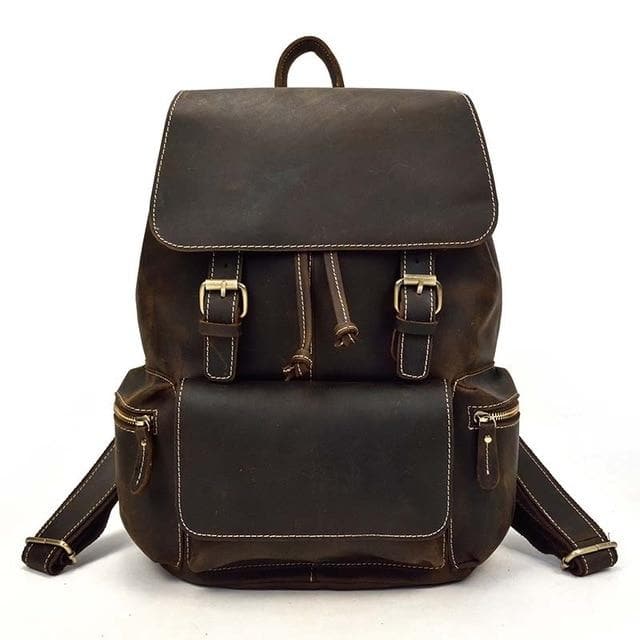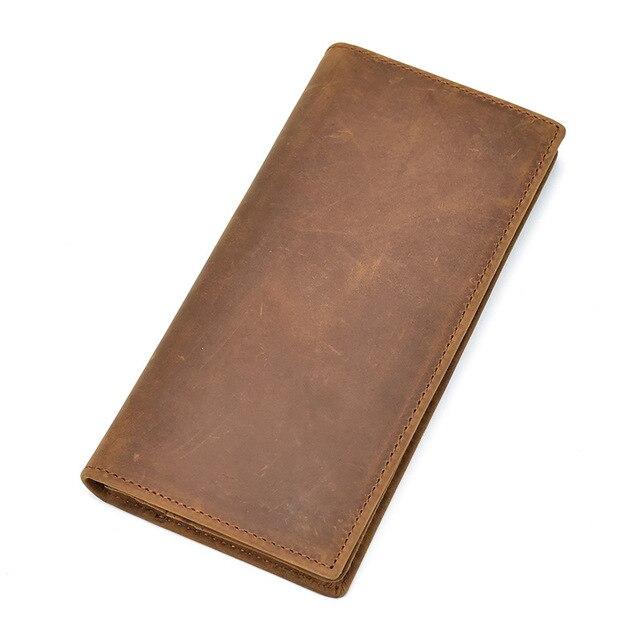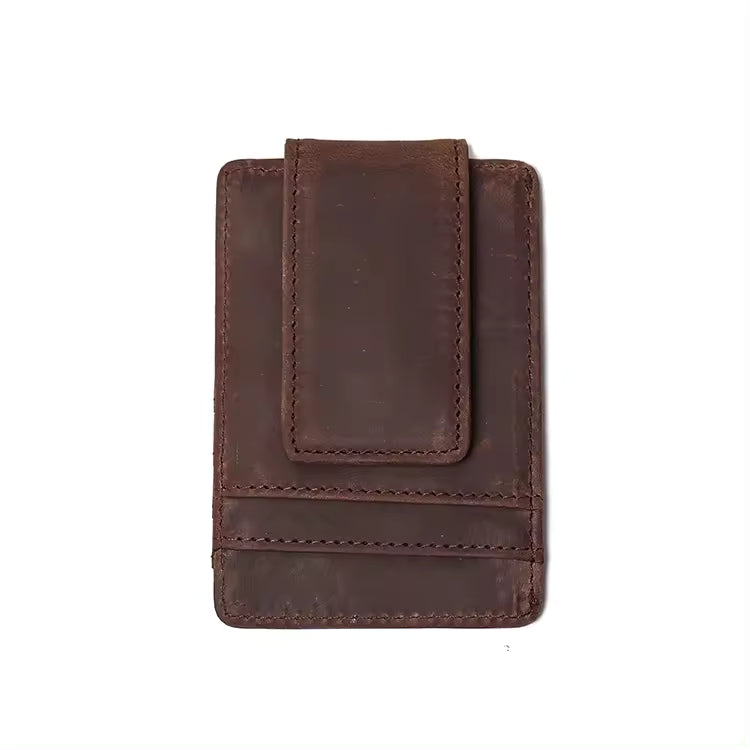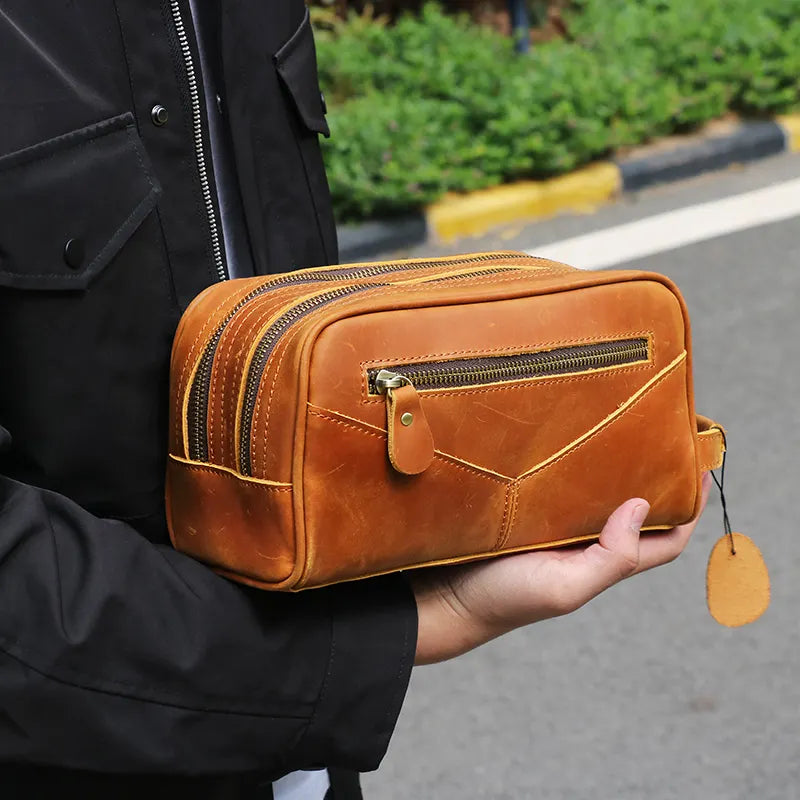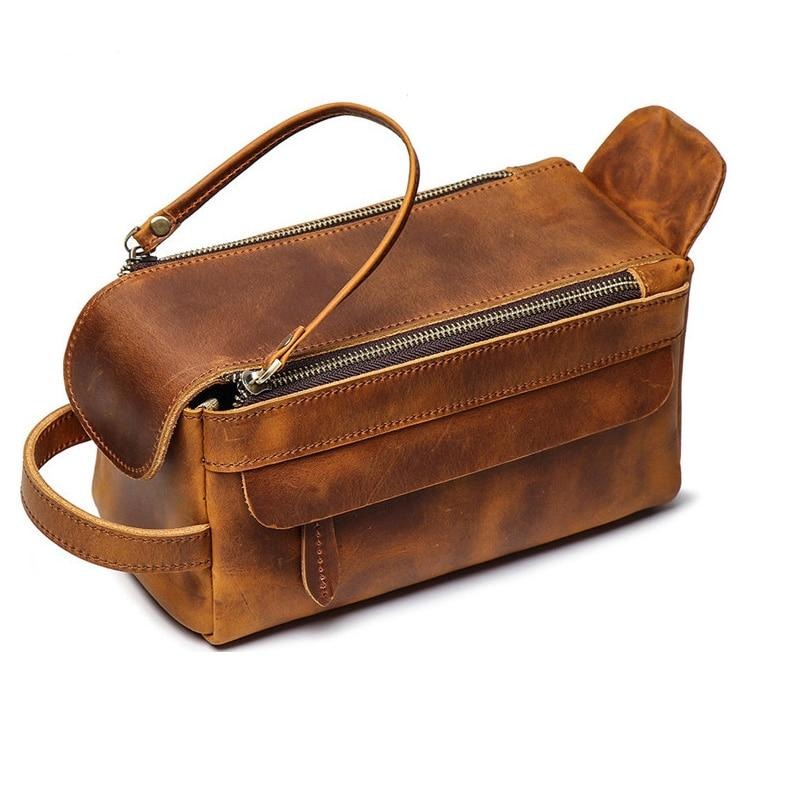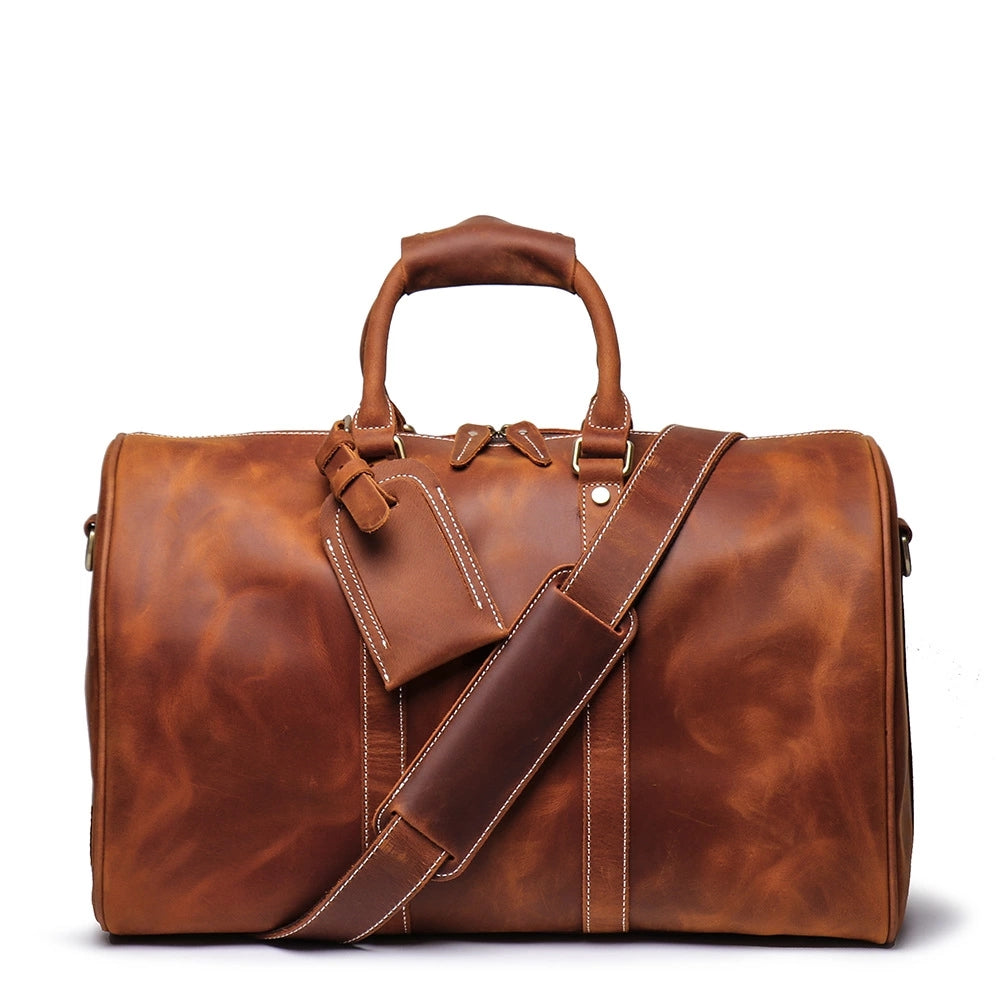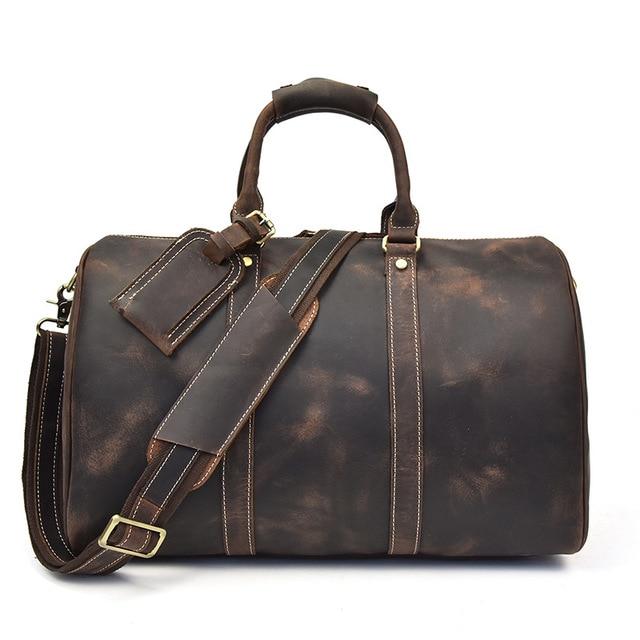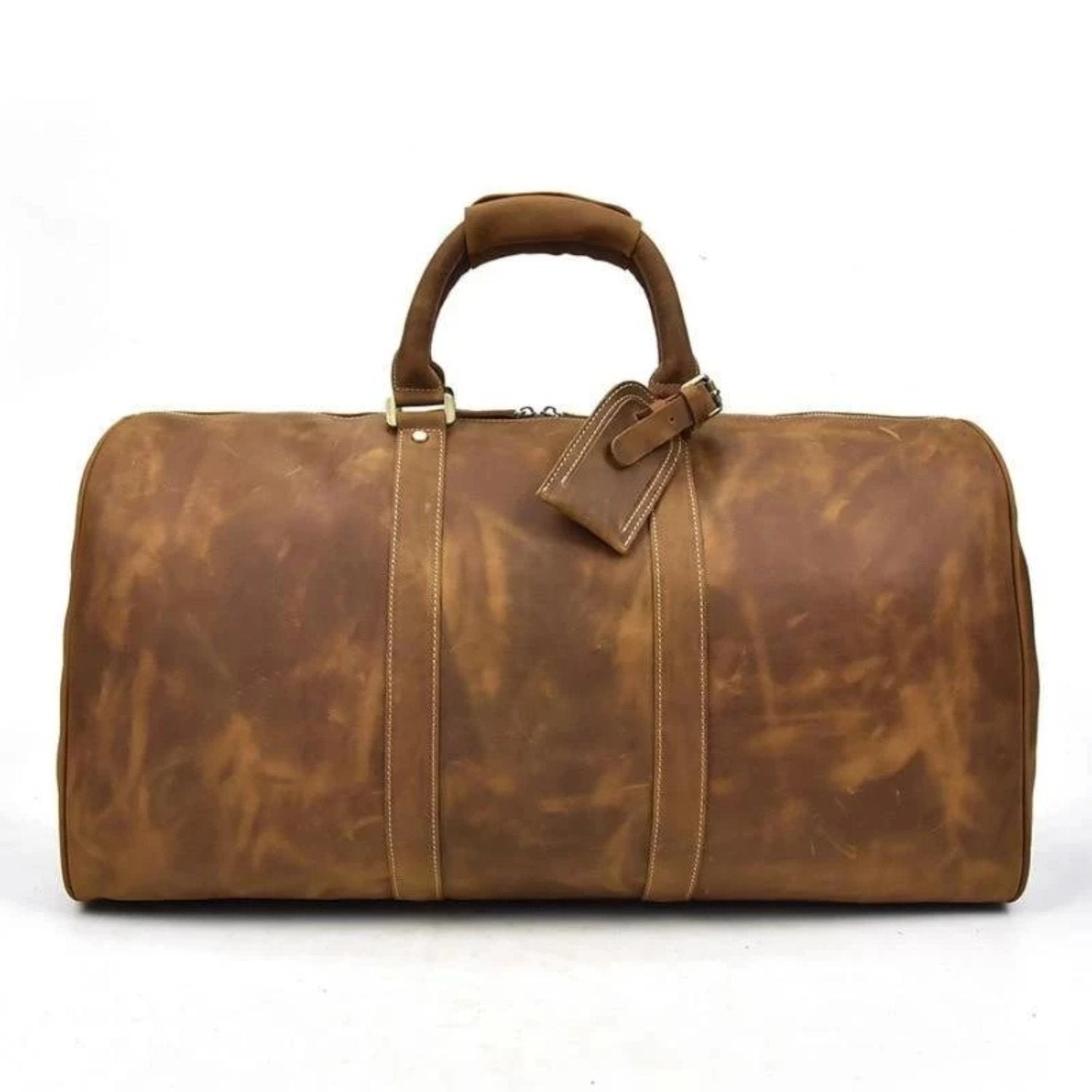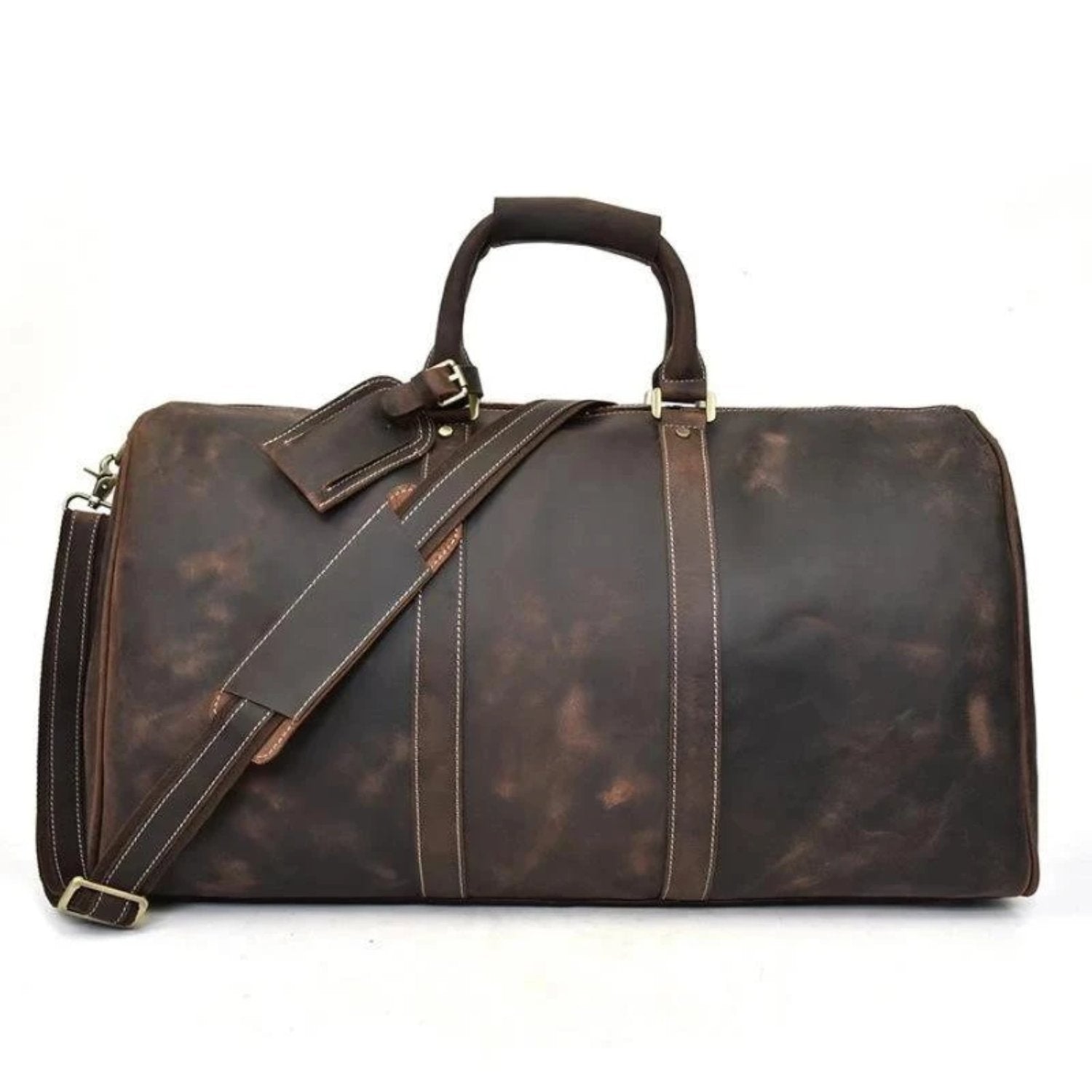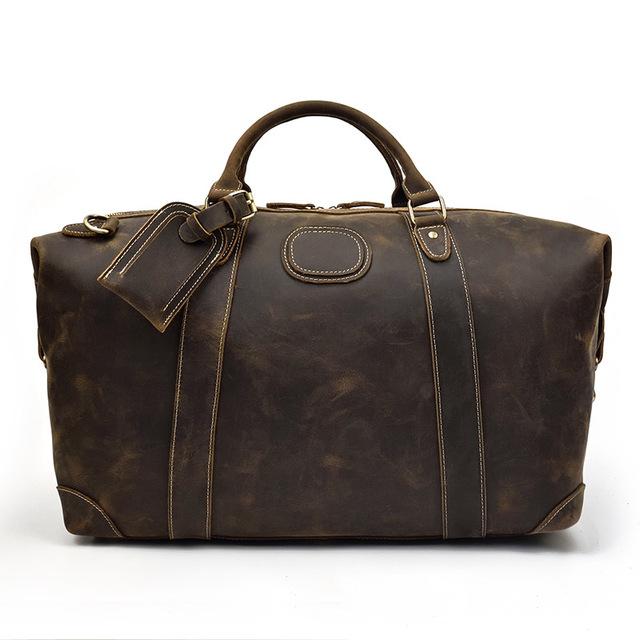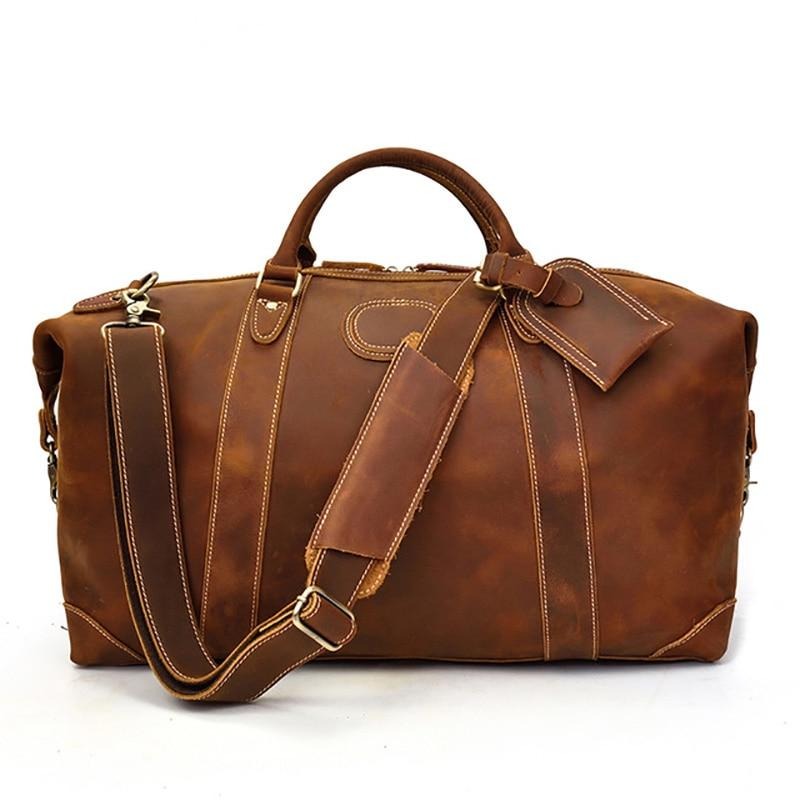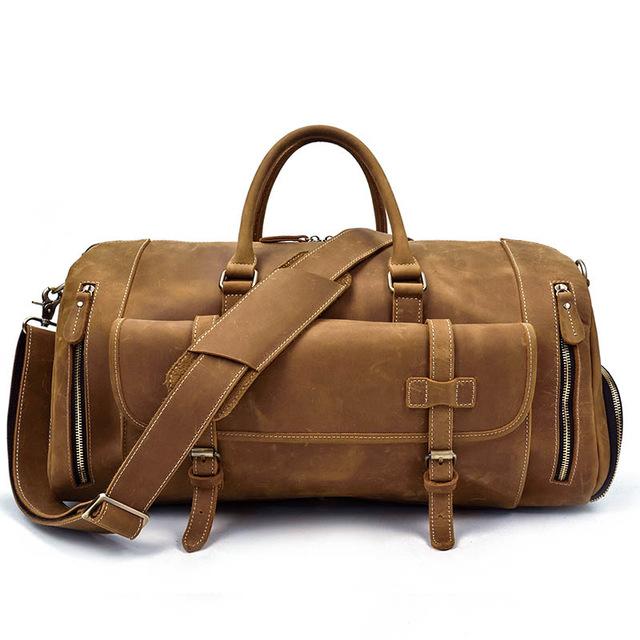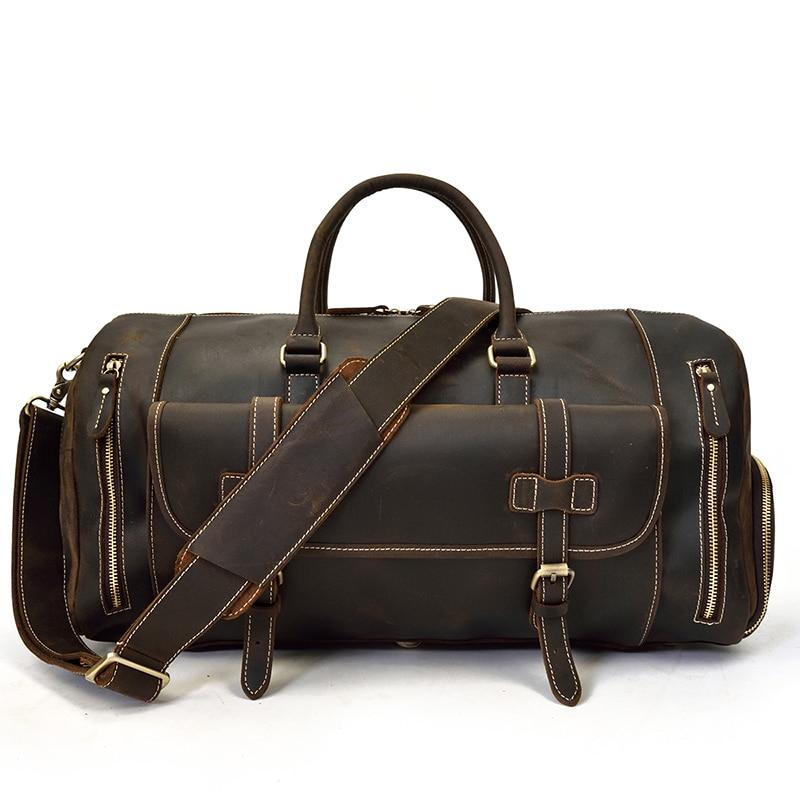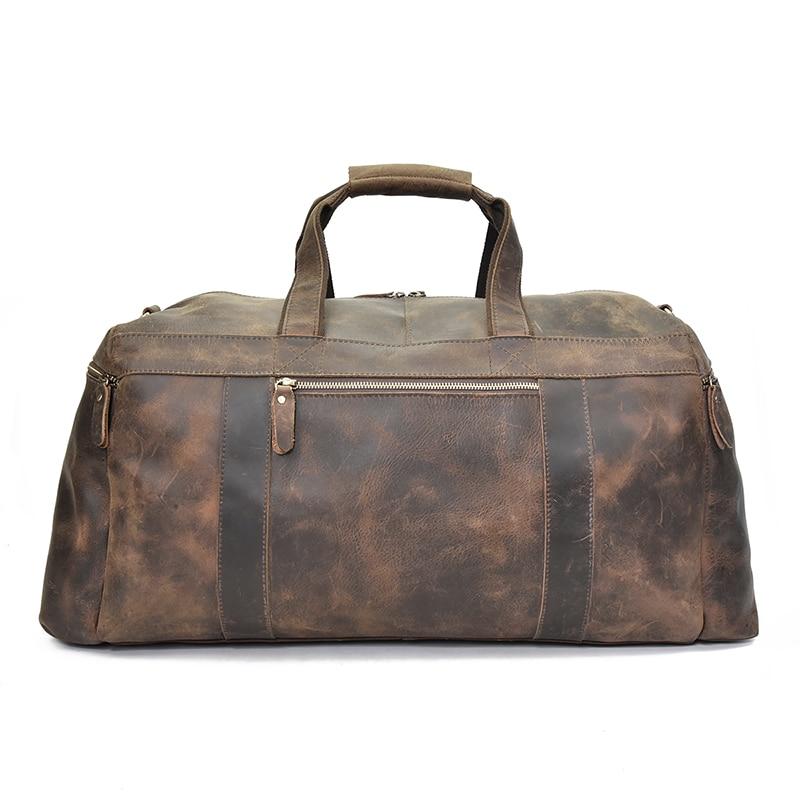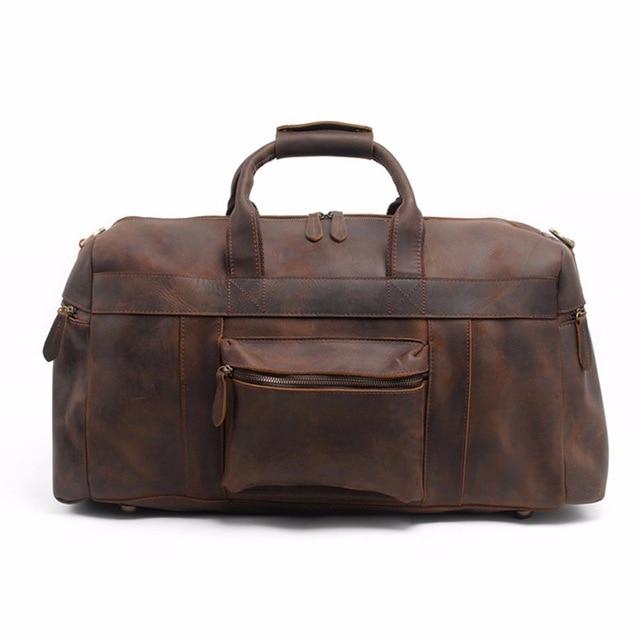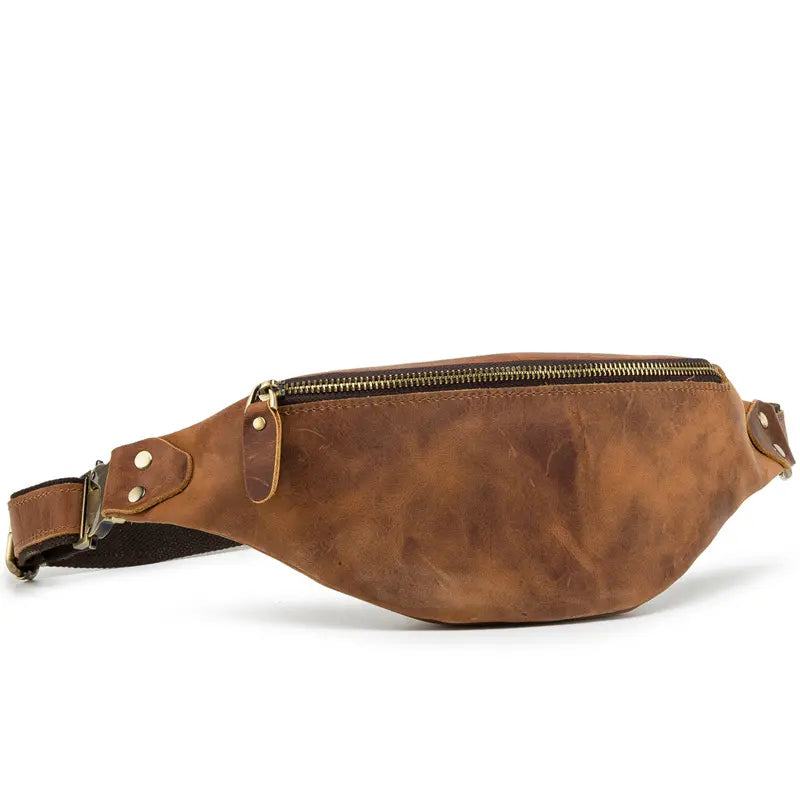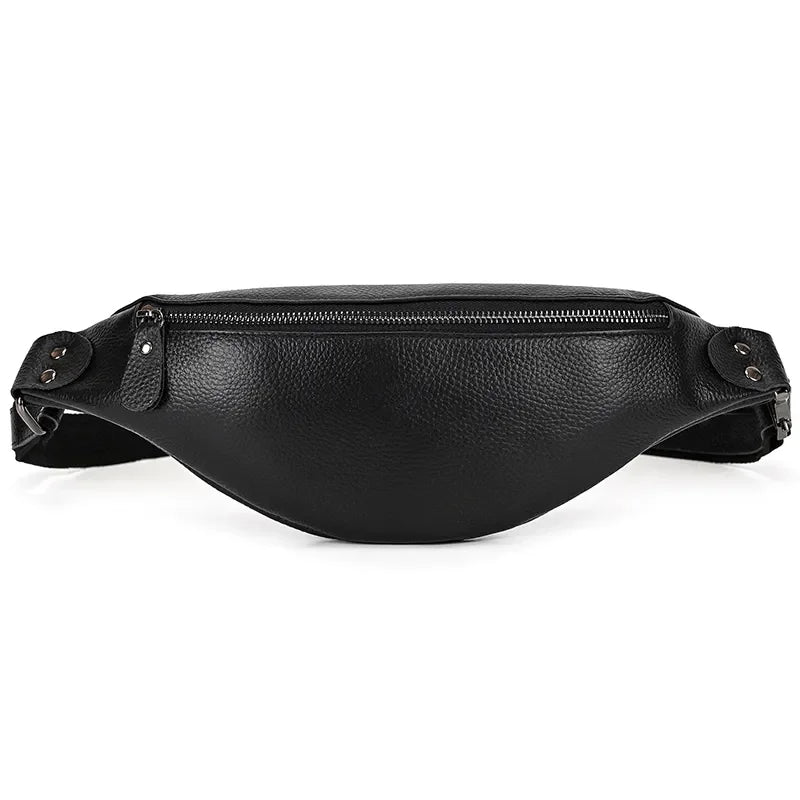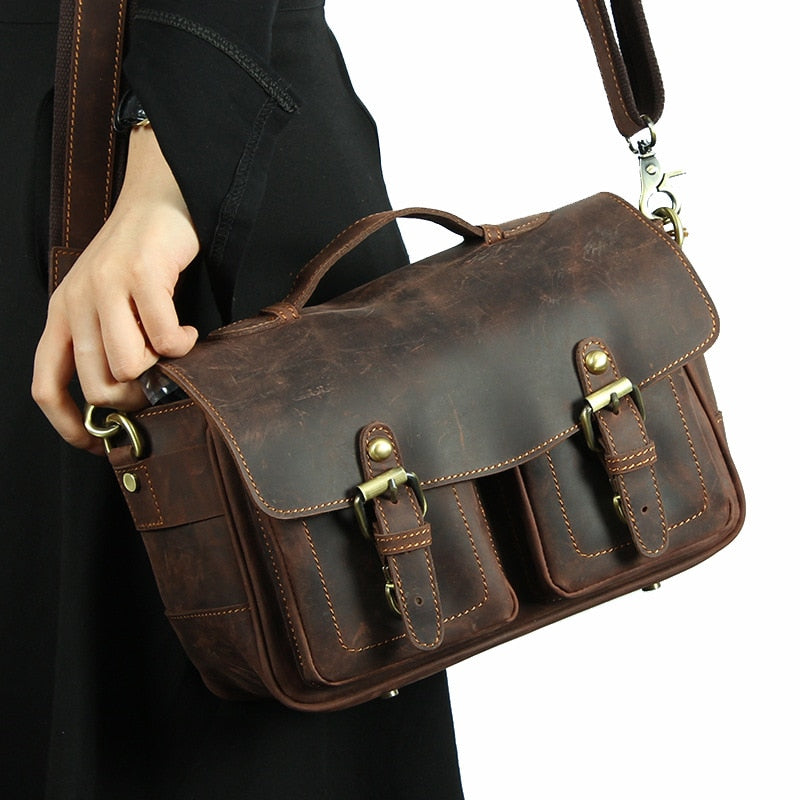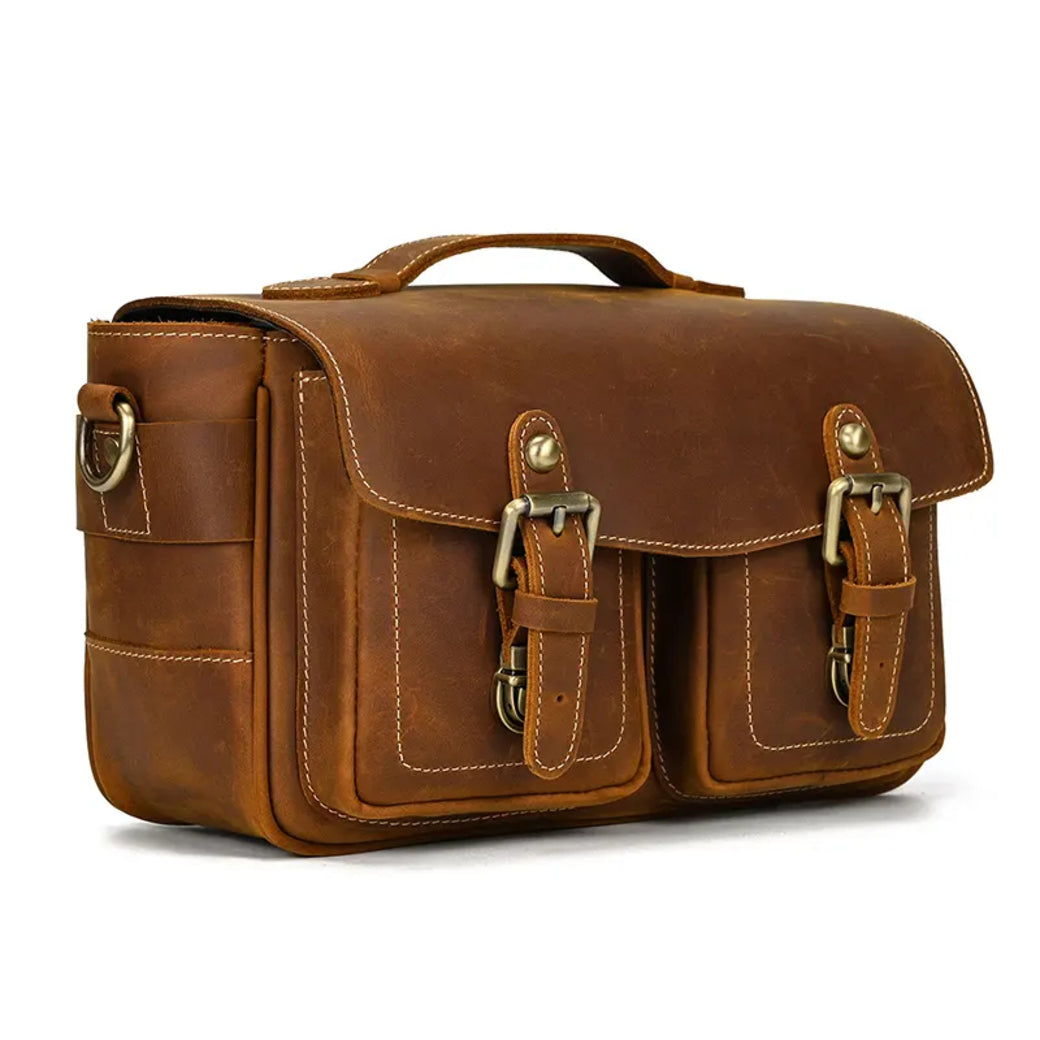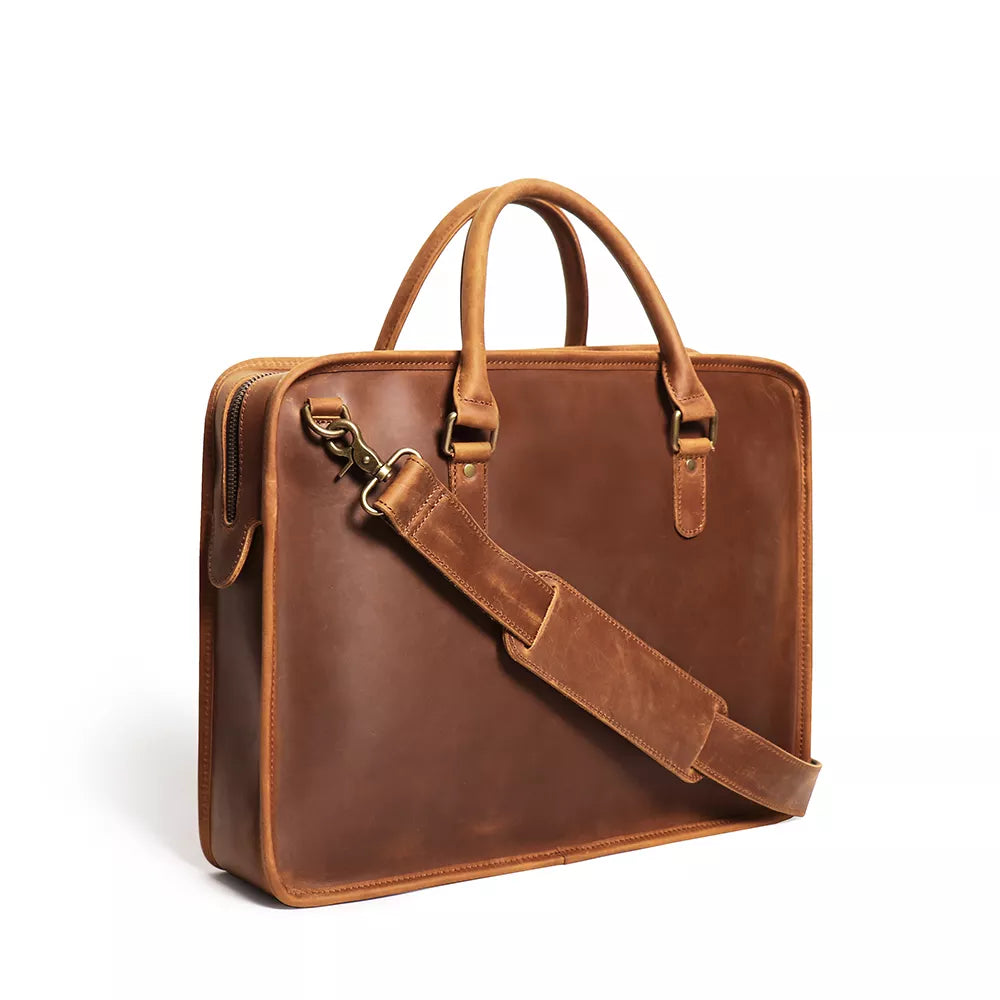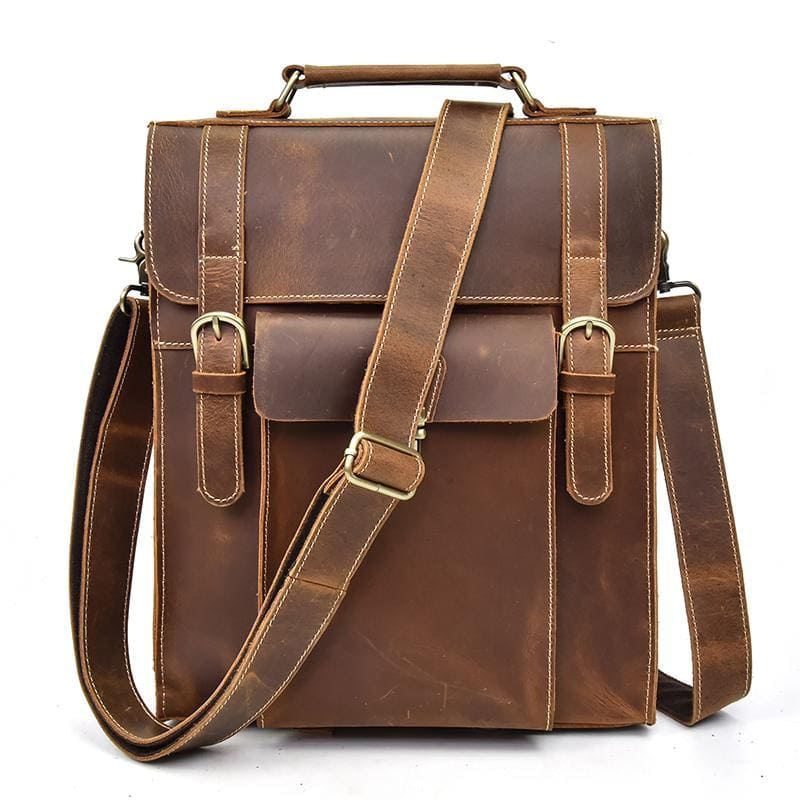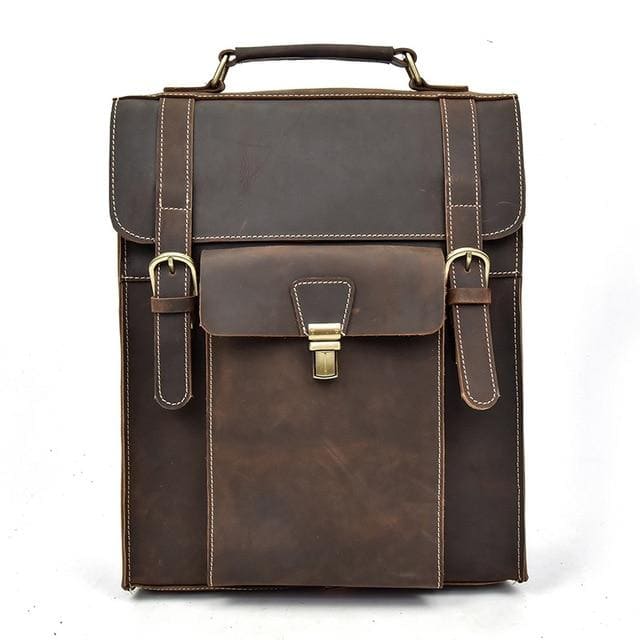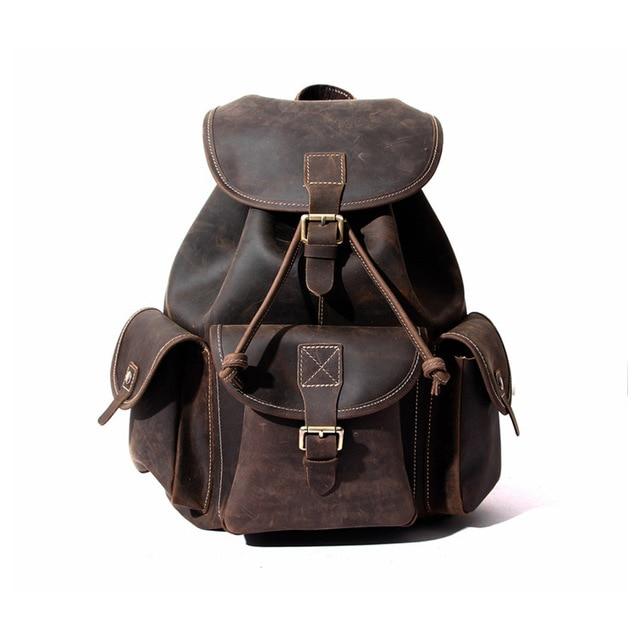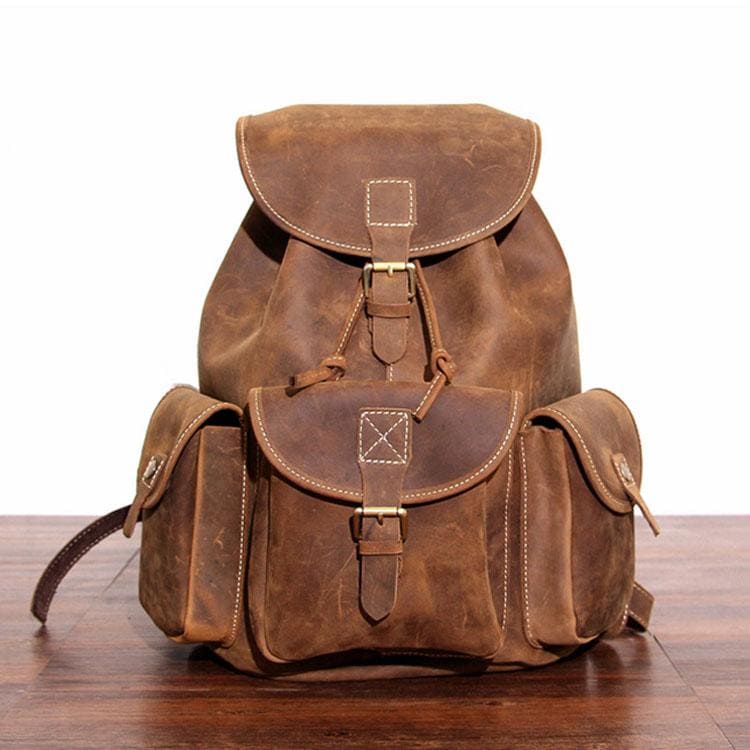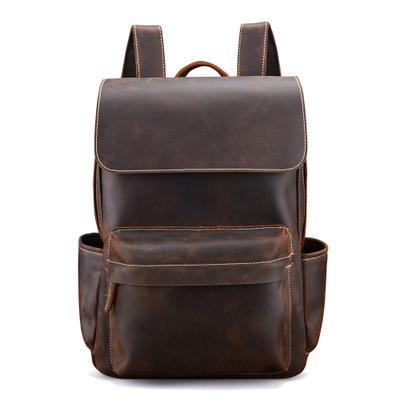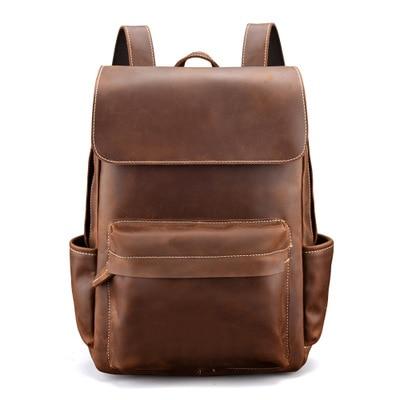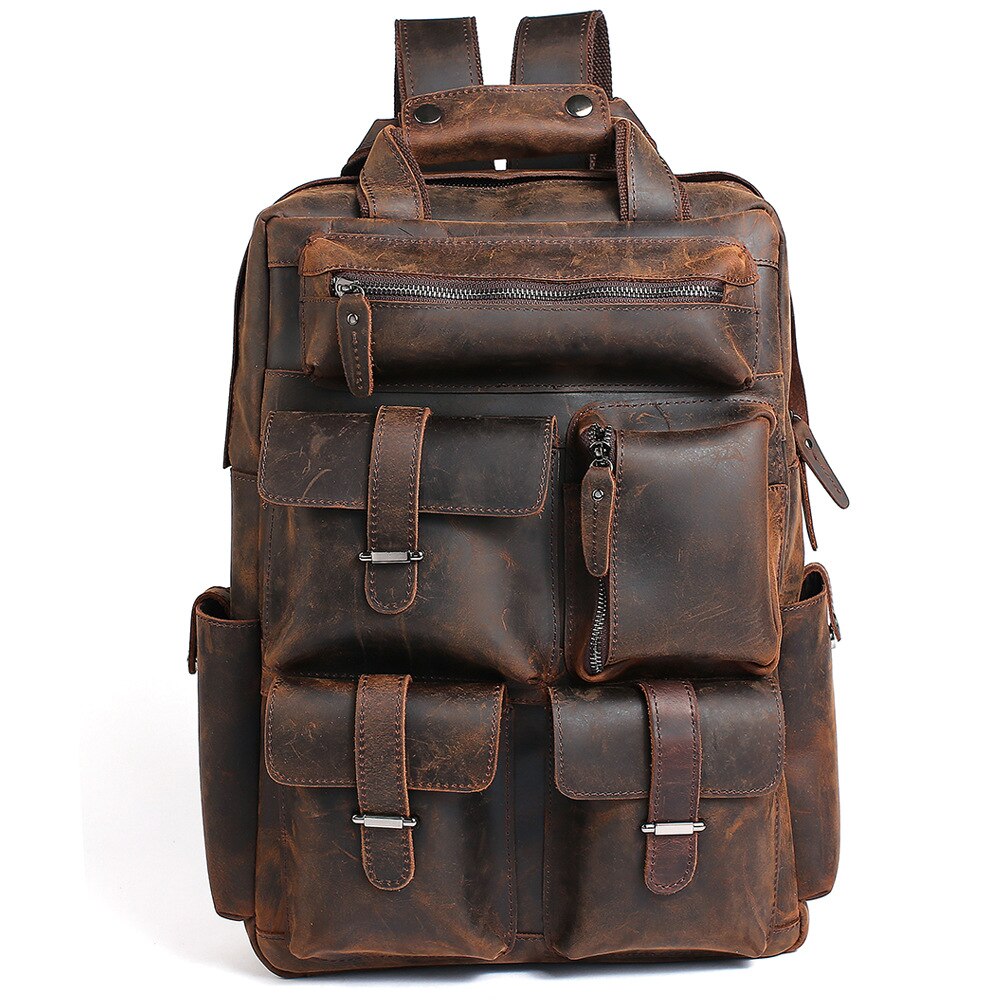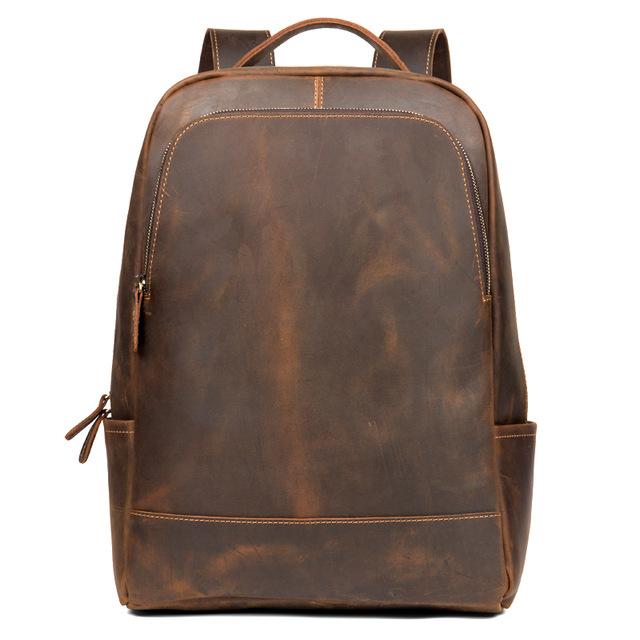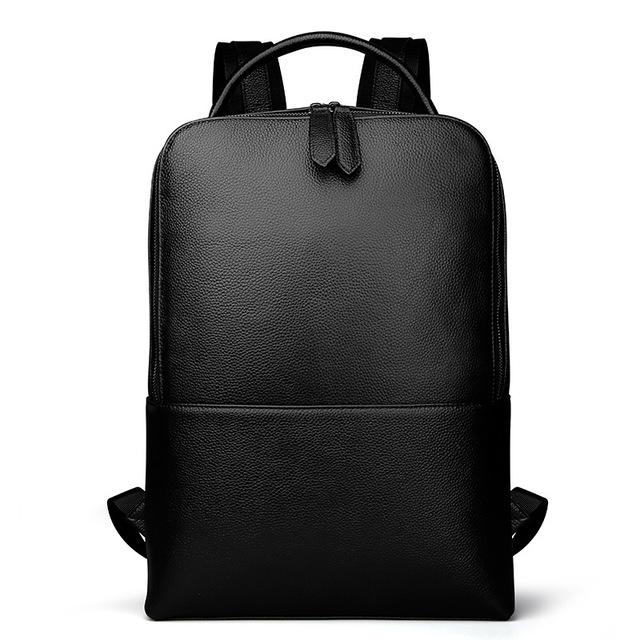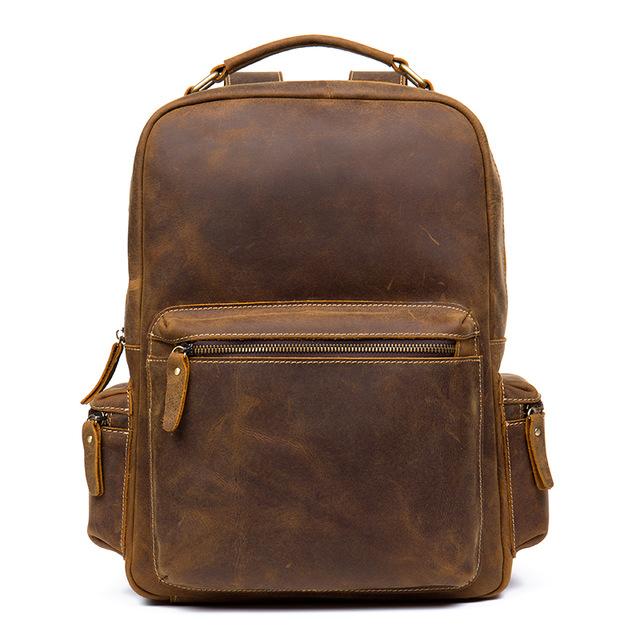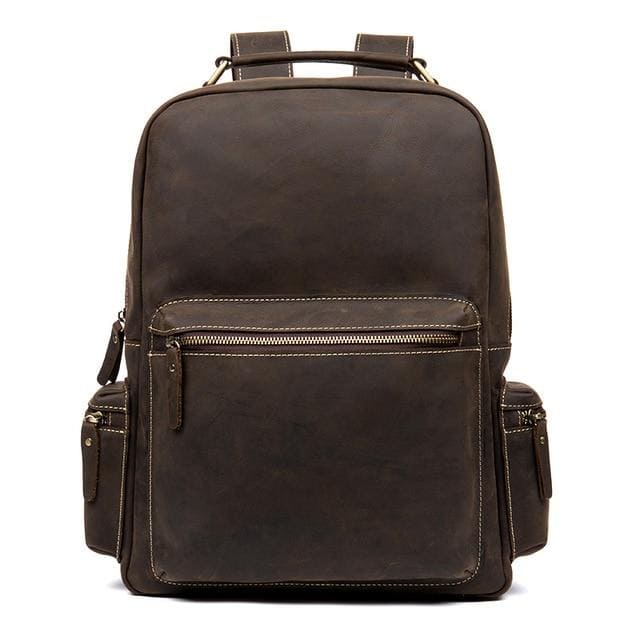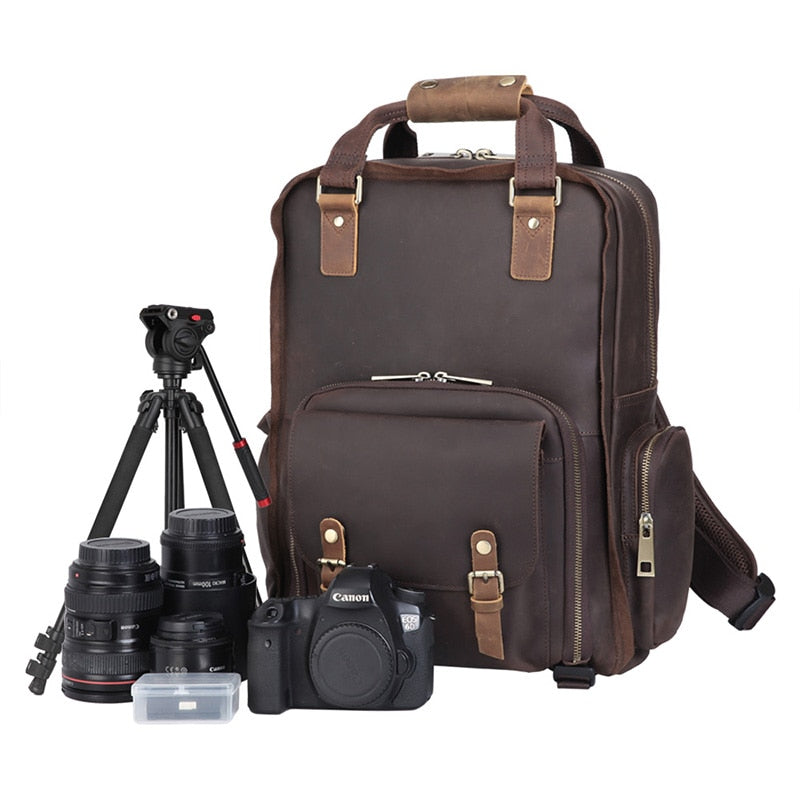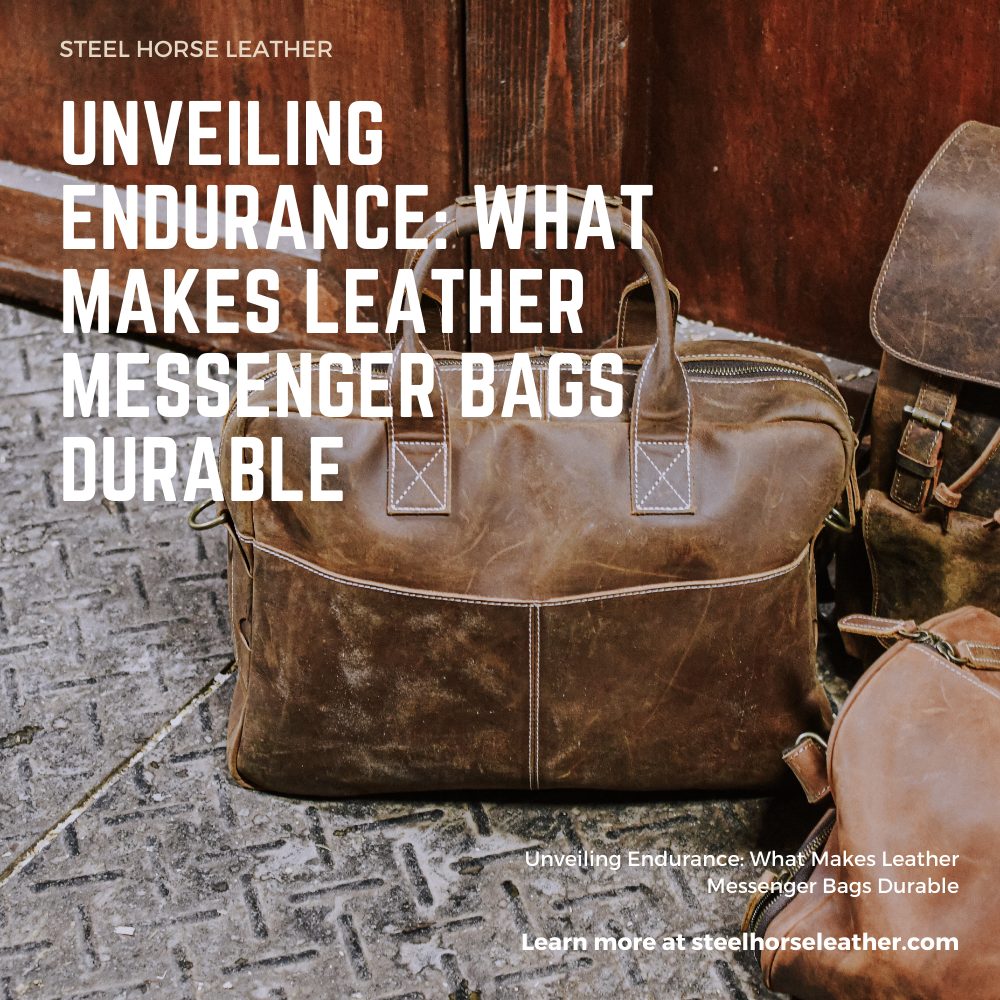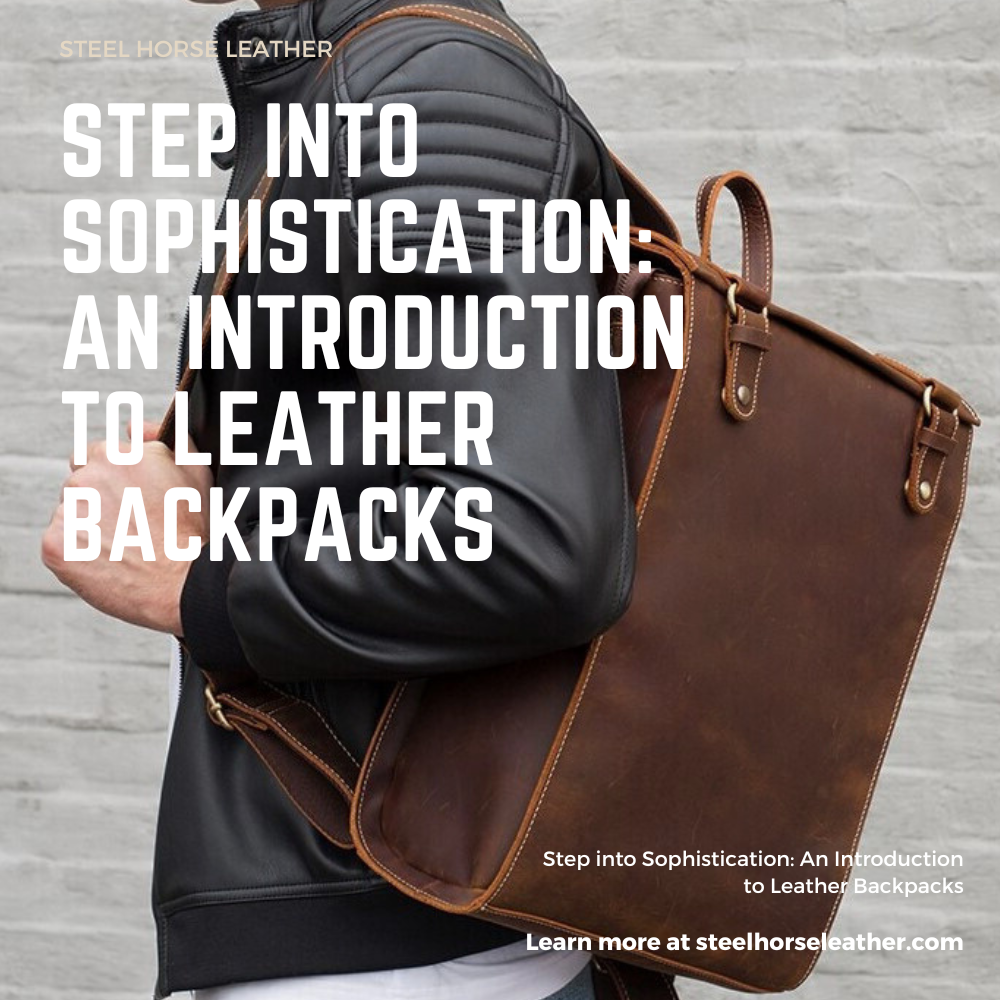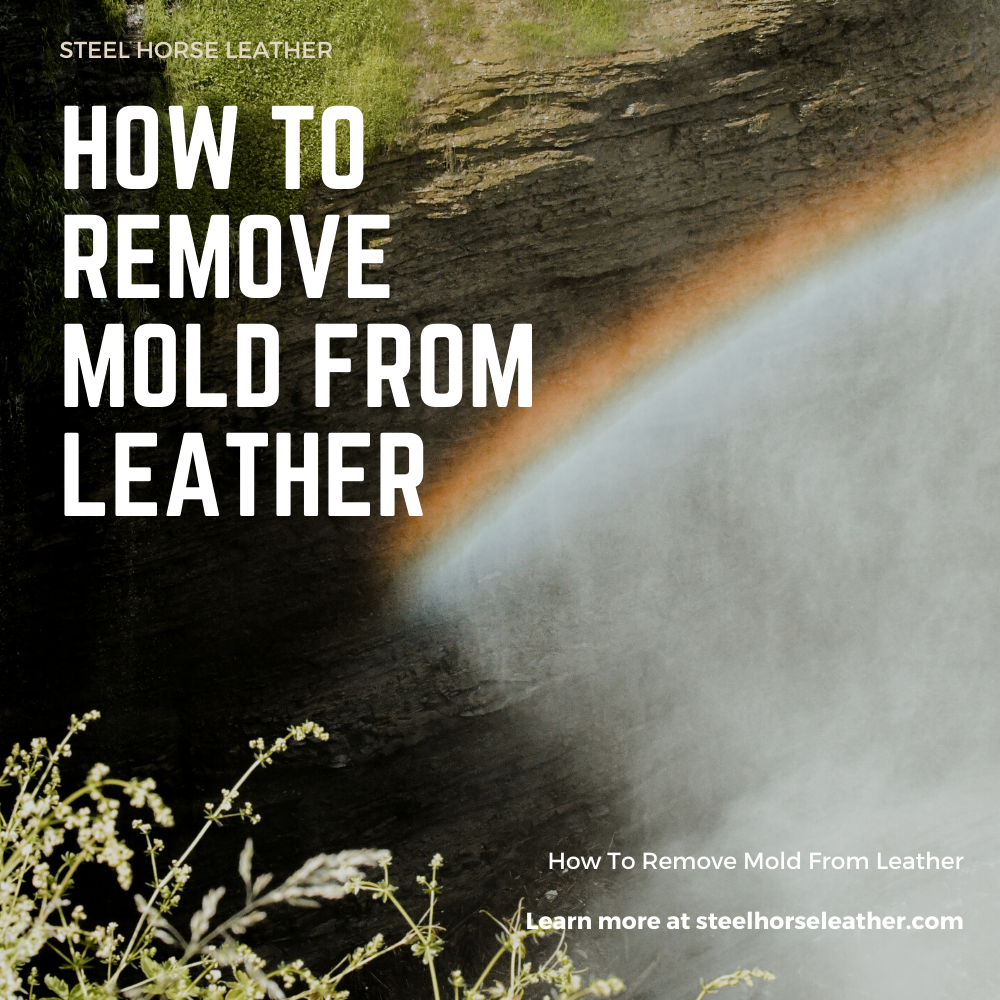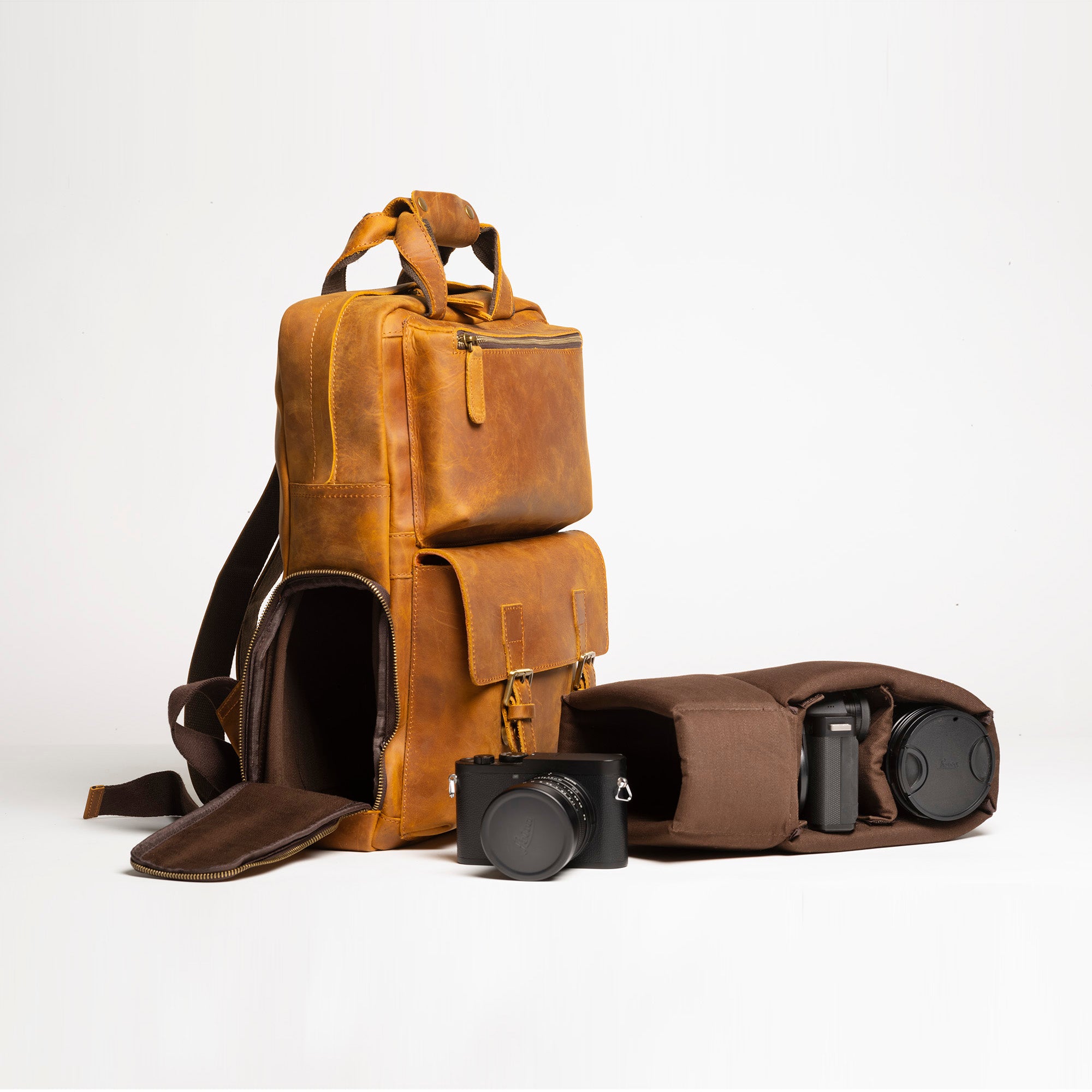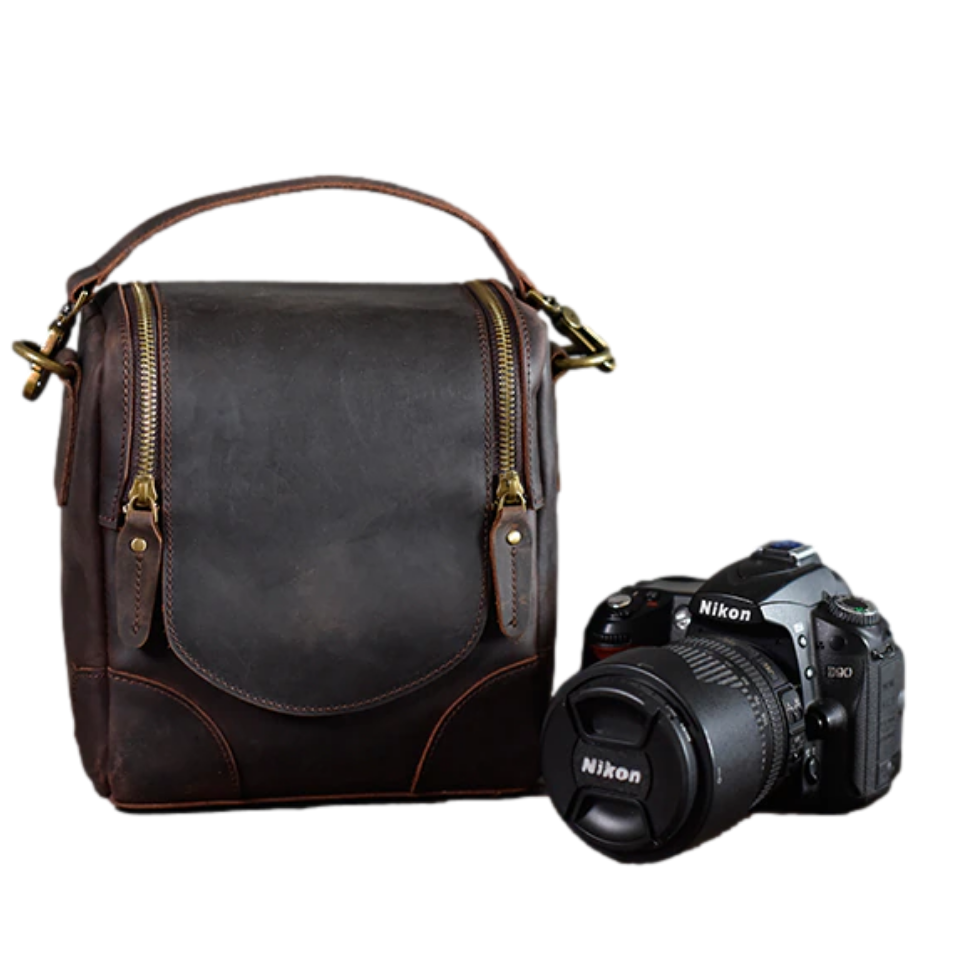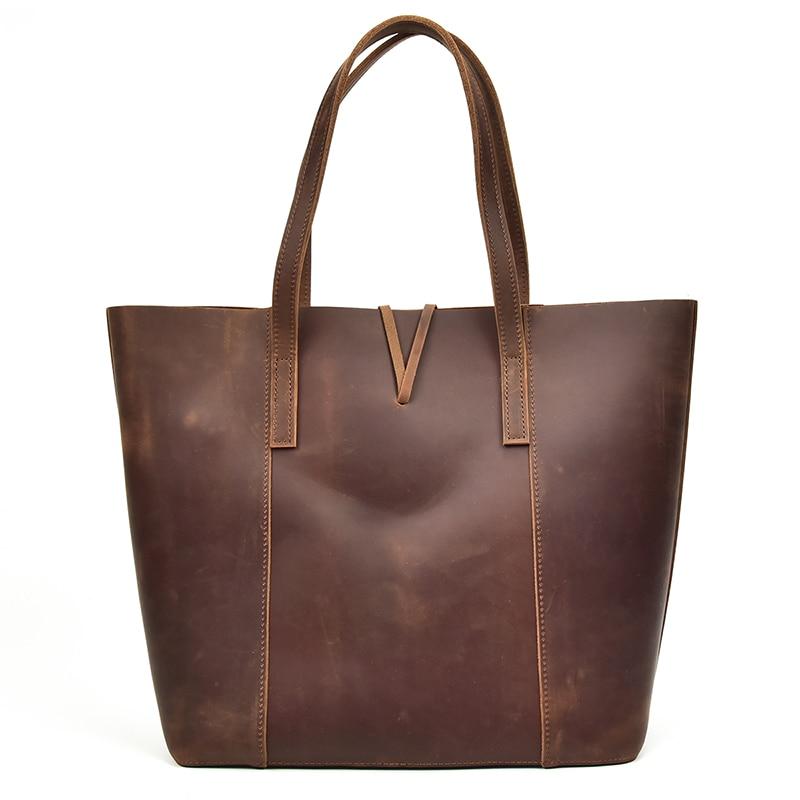When you buy one of our Steel Horse Leather Co. Bags, you're getting high-quality leather that keeps its natural pores and enables air to circulate through the bag.
Typically, when people think of leather, they see something thick and durable; they don't picture something that allows for enough ventilation, asking themselves “Does Leather Breathe?”. But the reality is that leather breathes, and it breathes better than any synthetic leather or plastic that you could find in a purse. Leather's appearance and feel are unmatched by the fabric's capacity to wick moisture away from the body.
How is it that thick, rough leather is just as breathable as light fabric? As an example, consider your own skin. It's permeable to both air and water, yet rather thick and long-lasting. As a result of pores in your skin, air may freely circulate inside your body. The skin of a cow is similar to human skin in that it has pores. When you buy one of our Handmade Leather Bags, you're getting high-quality leather that keeps its natural pores and enables air to circulate through the bag. You should only purchase items made of 100% split leather because fake or bonded leather does not contain these pores. That leather can't breathe, so it's more likely to mildew and decay than regular leather.
Now, when we say leather breathes, we don't only mean that it enables air to pass through. When leather "breathes," a process happens. When you inhale leather, it absorbs moisture from the air around it and pulls it deep into the fibers. Moisture penetrates into the leather, bringing old oils to the surface where they may be seen. When old oil is removed from the pores, the pores become more open, allowing new oils to enter. When a cow's leather was used, the cow would generate oils to lubricate the skin and replenish the lost oils. Because your smooth leather bag is no longer a part of the cow, your bag requires appropriate leather care to give the fresh oil. This is why treating your luggage on a regular basis using leather oil or cream is critical to its longevity.
Key Takeaways
-
Genuine leather breathes through natural pores inherited from the animal's skin, allowing air circulation and moisture management that synthetic materials cannot replicate
-
The leather "breathing" process involves absorbing moisture from the air, which draws old oils to the surface and opens pores for new conditioning oils to penetrate
-
Only 100% genuine leather maintains breathability - fake, bonded, or synthetic leather lacks natural pores and cannot breathe effectively
-
Regular conditioning with leather oils or creams is essential because leather can no longer produce its own natural lubricating oils like the living animal did
-
Proper leather care requires balance - too little moisture causes cracking and brittleness, while too much can damage the material's structure
Why Trust Our Leather Expertise?
At Steel Horse Leather, we bring decades of hands-on experience in leather craftsmanship to every insight we share. Our master artisans have dedicated their lives to perfecting the traditional art of leatherworking, giving us deep understanding of how leather behaves, breathes, and ages over time. This isn't just theoretical knowledge – it's expertise born from countless hours of working with genuine full-grain leather, observing its properties, and understanding the intricate relationship between leather fibers, natural oils, and environmental factors.
We've also taken a comprehensive approach to understanding leather from source to finished product. Through our extensive vetting process of leather suppliers, we've gained intimate knowledge of tanning practices, leather grades, and the critical factors that determine whether leather will truly breathe as nature intended. Our obsessive attention to leather quality means we can distinguish between genuine breathing leather and synthetic alternatives that merely claim to have the same properties. When we explain how leather breathes and why proper care matters, we're drawing from real-world experience of what keeps leather supple, durable, and functional for years to come.
Does Leather Breathe?

Leather has taught me a valuable lesson: it breathes better than any synthetic material. Each time I went shoe shopping, this lesson was reiterated to me. My father, a self-proclaimed leather expert, often warned me to buy real leather shoes rather than fakes or plastic ones since the latter wouldn't allow my feet to breathe, resulting in sweaty, odorous, and disgusting feet. At the very least, that's how I recall it happening.
There is no actual method to quantify breathability, which isn't really a term, so we'll just say leather breathes a lot. One of the reasons it works so well in the archetypal context of "the hardworking man" with his leather boots and patent leather gloves is because of this. If you're working hard in the sun, you're going to sweat, but the leather will keep that sweating heat at a tolerable level.
How Does Leather Breathe?

| Aspect of Leather "Breathing" | Explanation/Process | Key Takeaways/Implications |
|---|---|---|
| Inherent Porosity | Leather, being a natural fabric derived from animal hide, retains its inherent pores, similar to human skin. | This natural porosity allows air and moisture to pass through the material. Any "leather" with plastic in or on it will have these pores removed or sealed, hindering airflow and damaging leather's reputation. |
| Functionality of Pores (Post-Life) | Though no longer alive, leather (like the animal's skin) continues its original purpose of absorbing moisture and providing protection. | The only change is that it now carries items like cosmetics and mobile phones instead of internal organs. |
| Moisture Absorption and Lubrication Cycle | Leather "inhales" moisture from the air, which penetrates deep, pulling out old, less potent oils and dispersing them to the surface ("exhalation"). This opens pores for new oils. | This process is crucial for maintaining the leather's health. Leather conditioners and a soft cloth are used to replenish lubricants when natural oils deplete. |
| Role of Lubrication at Microscopic Level | Protein connections hold leather fibers together. Lubrication prevents these connections from chafing and weakening. | Proper lubrication maintains the structural integrity of the leather. Too little or too much water can cause brittleness. |
| Ideal Storage Conditions | To facilitate proper "breathing" and prevent degradation. | Keep leather in a cool, dry place away from direct sunlight and heat. |
After leather leaves the animal, it will, of course, begin to degrade. Leather decomposes fast since it is biodegradable. As a result, the hide is preserved to avoid decomposition before being tanned and polished to produce the leather you're looking at right now.
How does leather manage to breathe, given how tough and thick it is? The most common ventilated fabric is mesh, which is so fine it's almost detectable. Well, consider this: you're covered with hair and skin. How do moisture and air travel through your skin? There are pores on your body! Cows, on the other hand, are exactly the same. The fact that leather is a natural fabric gives it a slew of interesting qualities, such as the fact that it is inherently porous, allowing it to breathe. Ads that mislead consumers into buying cheap leather have yet another unintended consequence. Any "leather" with plastic in or on it will have those pores removed or sealed, resulting in a loss of airflow. It does nothing but damages the reputation of leather.
If your leather didn't have pores for air to pass through, how could it be alive? What's that, you say? You're certain your leather is no longer alive, right? You're saying it doesn't even have lungs or a mouth? Okay, that's understandable. Your leather isn't really alive. Even so, it was once a part of a live animal and served the same purpose that your leather handbag does now: absorbing moisture and protecting the animal's internal organs from injury. Make no mistake about it — the only change is that your leather now carries cosmetics and a mobile phone instead of internal organs.
After leather leaves the animal, it will, of course, begin to degrade. Leather decomposes fast since it is biodegradable. As a result, the hide is preserved to avoid decomposition before being tanned and polished to produce the leather you're looking at right now. Our post “Leather Tanning Methods” contains some information about this procedure. For the time being, this prepping process will help your leather upper start off on the right foot, but it won't be that way forever.

The Dagny Weekender | Large Leather Duffle Bag
When the animal that became your leather handbag was still living, lubrication maintained its skin healthy. It's similar to the oils on your fingertips or the conditioner you put on your skin. The principles remain the same. The only difference is that the animal was able to create natural oils in its own body, whereas your leather is unable to. As a result, it'll have to find a new source of lubricants.
There is a role for water in this. Despite its "breathing," leather is really a cunning minx that takes moisture from the air and absorbs it. By inhaling, the moisture penetrates deep into the leather, pulling out old oils that have lost their potency and dispersing them to the surface (exhalation). This opens the pores of the leather, allowing new oils to enter. When the old lubricants start to wear out, leather conditioners and a soft cloth come in handy to replenish the supply. Protein connections hold your leather's fibers together, which is visible under a microscope. Lubrication prevents these connections from chafing and rubbing against one another, which causes them to weaken and eventually come apart. There's a fine line between slick and mushy when it comes to lubricant. The same is true for water: too little or too much H2O can cause the leather to dry up and become brittle over time. See what we mean in our blog post, "How to keep Leather Bags from Cracking." To make your leather breathe like a Tibetan Monk, you'll want to keep it in a cool, dry place away from direct sunshine and heat.
Frequently Asked Questions
What is Crazy Horse Leather?
Crazy Horse leather is handcrafted by master leatherworkers utilizing only the best full-grain leathers.
What's the difference between leather and synthetic?
Despite its "breathing," leather is really a cunning minx that takes moisture from the air and absorbs it. This moisture dives deep into the fibers of your leather as it inhales, pulling out old oils that have lost their substance to the surface of your leather to disperse (exhalation), and opening the pores to make your leather breathe for new, fresh oils to arrive.
What is PU Leather?
It's a synthetic leather substitute made from polyurethane, a material that has a similar feel and looks to leather but doesn't use any animals. Leather made entirely from synthetic materials, such as 100 percent polyurethane (PU), does not use any animals in the production process. When it comes to leather, synthetics like PU and Nylon are both considered vegan leather options. The most popular technique to make PU leather is to cover a fiber basis with a polyurethane coating or a plastic polyurethane cover (generally polyester). It is possible to create "double-cast" leather using a combination of PU and genuine leather. Authentic leather can be split and used as a basis for the "double-cast" leather, which is then coated with either PVC or PU.
What is Faux Leather?
Synthetic leather is also known as fake leather, and the term "faux leather" is only one of several labels for it. In the artificial leather industry, terms like fake leather (for leather sofas, chairs, and headboard leather upholstery), leatherette (for vehicle upholstery, clothes), and koskin are frequently used to identify specific end applications (consumer goods). Polyurethane ("PU") and polyvinyl chloride are the two main materials used in the production of fake leather (PVC).
Does Suede Breathe?
That's correct. The fabric's high breathability is due to the fibers' porous structure. Suede shoes have this property. In the summer, if you wear these shoes to go out or to work, your feet should be less sweaty. Suede car seats, suede leather furniture, and other leather goods that employ suede all have a high degree of permeability. While aniline leather is well-known for its ability to breathe, suede easily outshines it.
Does Faux Suede Breathe?
It'll probably be as breathable as polyester or plastic. These are the components that make up fake suede, and while it resists stains and water, it lacks the porous aspect that real suede possesses. The tight weave of faux suede construction materials eliminates any actual holes that would allow the garment to breathe smoothly. You may discover that you sweat more in imitation suede than in genuine fabrics.
Does Suede Breathe Better Than Leather?
No. Because both are made of the same substance, they are among the best-breathing textiles available. In comparison to leather and suede, cotton appears to be the only fabric that allows for superior airflow. Leather and suede are both permeable, with the main difference being that suede is a thinner fabric. It's possible that a tiny coating like that will make all the difference. Due to the lack of standardized methods for determining breathability, it's difficult to tell which one is superior.
Summary
For the time being, when we say leather breathes, we don't simply mean that it enables air to pass through it. When leather "breathes," a process happens. When you inhale leather, it absorbs moisture from the air around it and pulls it deep into the fibers. Old leather oils rise to the top when moisture seeps through. When old oil is removed from the pores, the pores become more open, allowing new oils to enter. When a cow's leather was used, the cow would generate oils to lubricate the skin and replenish the lost oils. Since your leather bag is no longer a part of the cow, you are responsible for providing the fresh natural mink oil required for its appropriate maintenance. As a result, treating your bag on a regular basis with leather oil, cream or, wax using a damp cloth is critical to its long-term viability.
Always keep in mind that water is life's breath! We need it, as do animals and plants, and our leather also requires it. Without water, our planet would turn into a barren wasteland, and leather will be no different. Careful lubrication is the shining beacon of hope when it comes to your leather friend's sensitive heartbeat! If you want to live long and prosper, remember that what cures may also kill you if taken in excess. You and your friend have something tremendous in common that you should safeguard and love. Allow air to circulate through your leather.
Leather Breathability Simulator
Experience how genuine leather "breathes" compared to synthetic materials with this interactive simulator. Watch as moisture moves through natural leather pores versus being blocked by synthetic alternatives, demonstrating why proper leather care and conditioning is essential for maintaining your Steel Horse Leather bags and accessories.
























